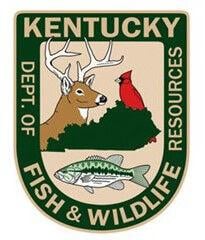New resource helps track Kentucky wildlife
Published 7:20 am Wednesday, February 7, 2024

- (Kentucky Department of Fish & Wildlife Resources photo)
|
Getting your Trinity Audio player ready...
|
Researchers with the Kentucky Department of Fish and Wildlife Resources (KDFWR) say they have been utilizing a new resource to aid in ongoing efforts to track and conserve wildlife in the state.
With the participation of key partners, wildlife biologists have installed three Motus Wildlife Tracking System stations in Kentucky since January 2023. The Motus System is an international network of researchers that use automated radio telemetry to track numerous species of birds, bats and insects.
An extension of Birds Canada, there are currently nearly 1,800 Motus receiver stations set up in 34 countries, listening for signals from more than 44,000 tagged animals.
With the support of the Louisville Zoo and Murray State University, a Motus station was installed at the Hancock Biological Station in Marshall County in Western Kentucky. The other two stations are installed at Eastern Kentucky University’s Taylor Fork Property and at Shaker Village of Pleasant Hill in Central Kentucky.
“These stations consist of a specialized radio receiver that automatically scans for, decodes and saves data on individual birds using unique tags attached to them,” said Michael Patton, an avian biologist with KDFWR. “The antennas allow us to scan at greater distances, up to 10 miles, in the direction each antenna is pointing.”
Automated radio telemetry uses receivers that automatically record signals from radio transmitters. It is used in a wide variety of ecological applications particularly for tracking migration of small animals. Collaborative automated radio telemetry uses coordinated arrays of automated stations that are all monitoring the same frequency to detect tagged animals over large areas.
Already contributing important information, the stations allow agency biologists to track tagged birds flying in and through Kentucky to collect data for local research projects, as well as to contribute to the data used by many other independent researchers in the Western Hemisphere.
“Motus provides us with an additional tool to learn more about the movements of Kentucky’s species of greatest conservation need,” Patton said. “This technology allows us to track small birds at greater distances than was previously possible.”
Visit Birdscanada.org/motus or motus.org to learn more about ongoing international research efforts.




